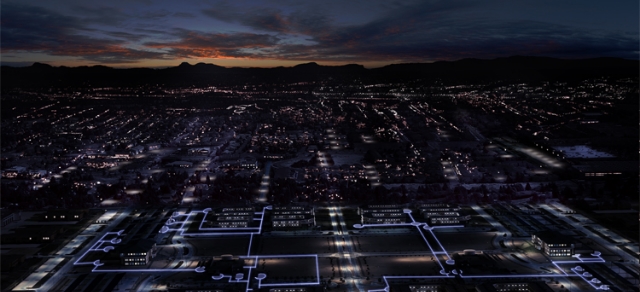The U.S. Environmental Protection Agency’s (EPA’s) plan to regulate carbon emissions is just the latest challenge facing the U.S. electric power system. Technological innovation is disrupting old ways of doing business and accelerating grid modernization. Last year, AEE released Advanced Energy Technologies for Greenhouse Gas Reduction, a report detailing the use, application, and benefits of 40 specific advanced energy technologies and services. This post is one in a series drawn from the technology profiles within that report.

A microgrid is a network of connected electricity generation assets, controls, and loads that can operate separately from a utility grid and/or easily connect to or disconnect from a utility grid. Microgrids come in three basic types: remote, customer-owned, and utility distribution. Remote microgrids provide power to communities far from utility networks. Customer-owned microgrids typically refer to microgrids in use at large facilities owned by a single customer, such as military bases and college campuses. Utility distribution microgrids refer to portions of the grid within the utility system that are configured to act as microgrids. In all cases, microgrids can generate, distribute, and regulate the flow of electricity to consumers at a local level. Remote and customer-owned microgrids are well-established applications, but utility distribution microgrids are just now emerging as intelligent grid technologies are deployed and more distributed generation (DG) is installed. Utility distribution microgrids rely on software and other technological advances to synchronize and operate in parallel to the larger grid but also act as a microgrid when called upon to do so, such as during a widespread power outage.
The United States is the leader in microgrid adoption, with nearly 1,500 MW installed capacity and another 1,100 MW in planning, according to Navigant Research. Most of these installations are customer-owned microgrids, such as the one used at the U.S. Food and Drug Administration research facility in White Oak, Maryland. This microgrid allowed the facility to maintain operations off-grid for two and a half days during Hurricane Sandy.
Interest in microgrids is driven primarily by their benefits for resiliency and reliability. During blackouts or extreme weather situations such as hurricanes, microgrids can generate and continue to deliver electricity to connected loads with no reliance on the utility grid. Microgrids can be particularly attractive to secure buildings and campuses, such as military bases, that require additional backup in addition to the utility grid. Many customer-owned microgrids are also combined heat and power systems, and as such provide year-round emissions benefits by virtue of their high overall efficiency.
